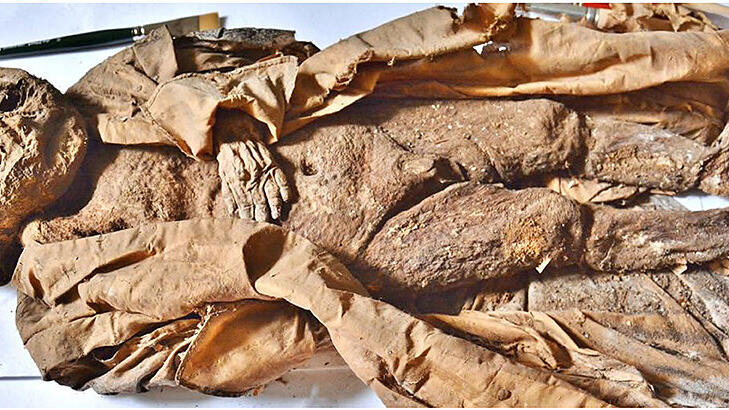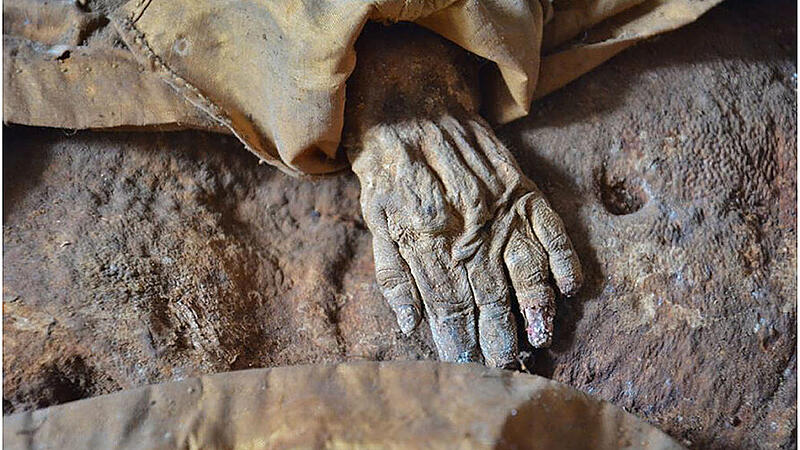As they report in the journal Frontiers in Medicine, the male infant died between 1550 and 1635 between the ages of 10 and 18 months. The child was obese, suffered from vitamin D deficiency due to insufficient sunlight, which led to rickets, and probably died of pneumonia.
The baby’s body comes from the family tomb of the Counts of Starhemberg, one of the oldest noble families in Austria. The crypt is located under a chapel attached to the Hellmonsödt parish church (Upper Austria) near the Starhemberg family seat at Wildberg Castle. Numerous members of the family were buried in decorated metal coffins with inscriptions in the crypt.
Only the infant lay in a small wooden coffin, with no name or other information. His grave robe made of expensive silk is a clear indication that the corpse was a member of this noble family, writes the German-Austrian research team led by Andreas Nerlich from the Munich Klinik Bogenhausen. The main objective of the study, approved by the Diocese of Linz and the family, was to obtain information on the identity of the infant.
Obesity thanks to noble status
The scientists examined the mummy using a variety of methods, including a full-body CT scan, histological analyzes of skin tissue and radiocarbon dating. Based on the age determination, the well-documented family tree and the assumption that only male firstborns were buried in the crypt, as was the case with the other burials, the study found that the child was most likely Reichard Wilhelm (1625-1626) , the first son of Erasmus the Younger (1595-1664).


The examinations revealed pathological abnormalities in the corpse. Thus, the thickness of the subcutaneous fat indicates obesity in the infant, probably caused by the very good diet consistent with his noble status. Furthermore, a deformity of the chest called “rachitic rosary” was found, which – even if other causes could not be completely ruled out – led to the “main diagnosis rickets”, as the researchers write.
lack of sunlight
This bone disease could have been a result of vitamin D deficiency, likely caused by lack of sunlight. In their work, the scientists point out that at the time, aristocrats were expected to have white, pale skin, while a suntan indicated low social status.
The CT scans provided evidence of pneumonia, which could also have been the cause of the child’s death. According to recent findings, children with rickets are much more susceptible to pneumonia, the scientists emphasize.
According to the researchers, the massive deformations of the skull and upper cervical spine that were also found may have occurred after the child’s death. They suspect the child was placed in a shallow coffin that was too small for the skull.
The study of a Renaissance infant mummy was particularly interesting to scientists because there is typically little information about the living conditions, diseases, and causes of death of infants and young children from earlier populations. The reason for this is that the human remains of such young children in burials usually decompose very quickly.
Source: Nachrichten




